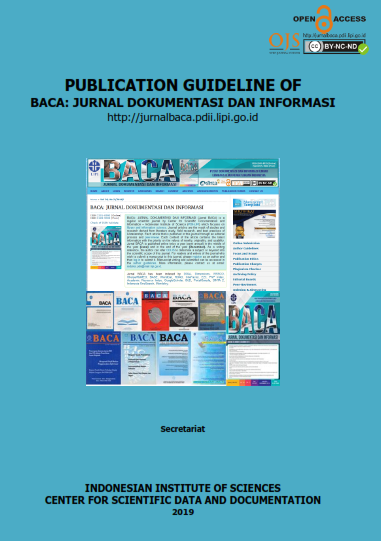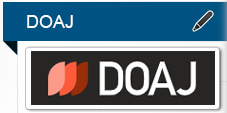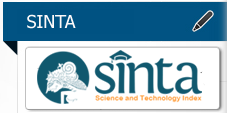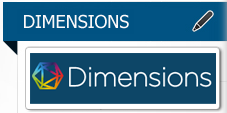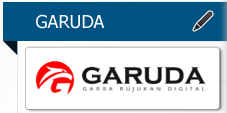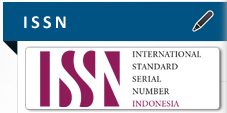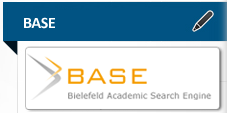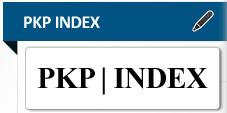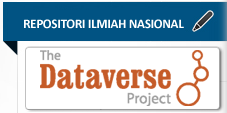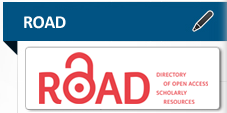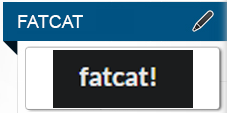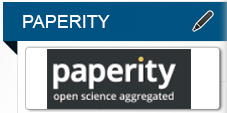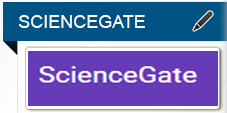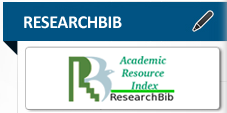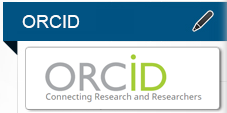UPAYA PEMERINTAH INDONESIA MENGENDALIKAN BERITA PALSU
Abstract
The aim of this study to gain an understanding of the government's efforts to organize and control fake news in the democratic era, especially ahead of the 2019 election. This research used the qualitative research methods, with a critical discourse analysis approach. Data was obtained from news texts published by online media during in 2018. Especially those containing fake news relating to general elections. Data collection used documentation techniques. The results showed that what was needed to control fake news were by making people healthy in cyberspace. The government must worked together with various organizations to disseminate and educate the public regarding content in cyberspace. In addition, the government have also set up a special institution which was tasked with overseeing the circulation of news on the internet and testing the truth.
Keywords
Full Text:
PDFReferences
Abbasi, A., Zhu, Z., Zimbra, D., Hsinchun, C., & Nunamaker, J. F. 2010. Detecting Fake Websites: The Contribution Of Statistical Learning Theory. MIS Quarterly, 34 (3), 435-461.
Andrea, M. (n.d.). Aesthetics of fake: an overview. Aisthesis, 9 (2), 59.
Aufderheide, P., & Firestone, W. 1993. Media Literacy: A Report of the National Leadership Conference on Media Literacy. Queenstow, MD.
Bayu, D. J. 2017. Blokir Tak Efektif, Menkominfo Harap Fatwa MUI Berantas Hoax. Di https://katadata.co.id/berita/2017/06/10/blokir-tak-efektif-menkominfo-harap-fatwa-mui-berantas-hoax.
Chen, Y., Conroy, N. J., & Rubin, V. L. 2015. Misleading Online Content: Recognizing Click Bait As ‘False News’. In Proceedings of the 2015 ACM on Workshop on Multimodal Deception Detection. Seattle, Washington, USA: ACM.
Coche, E. 2018. Fake News’and Online Disinformation: Case Study – Belgium. Amsterdam: Institute for Information Law (IViR) Amsterdam Law School University of Amsterdam.
Dodda, T. P., & Dubbudu, R. 2019. Countering Misinformation “Fake News” In India: Solutions & Strategies. New York: Factly Media & Research (Factly) and The Internet and Mobile Association of India (IAMAI).
Ecke, Ullrich, K. H., Lewandowsky, S., & T.W, T. D. 2010. Explicit Warnings Reduce But Do Not Eliminate The Continued Influence of Misinformation. Memory & cognition, 38(8), 1087–1100.
Fallis, D. 2009. A Conceptual Analysis of Disinformation. Proceedings of iConference.
Fallis, D. 2014. A functional Analysis of Disinformation. Proceedings of iConference.
Flynn, D. J., Brendan, N., & Jason, R. 2017. The Nature and Origins of Misperceptions: Understanding False and Unsupported Beliefs about Politics. Political Psychology, 38 (1), 127–150.
Frechette, J. D. 2005. Critical Thinking for the Cyberage. In G. Schwarz, & P. U. Brown (Eds.), Media Literacy: Transforming Curriculum and Teaching (pp. 100-118). Massachusetts: Blackwell Publishing Malden.
Goodman, S. 2005. The Practice and Principles of Teaching Critical Literacy At The Educational Video Center. In G. Schwarz, & P. U. Brown (Eds.), Media Literacy: Transforming Curriculum And Teaching (pp. 206-228). Massachusetts: Blackwell Publishing Malden.
Haciyakupoglu, G. 2018. Countering Fake News: A Survey of Recent Global Initiatives. Singapore: Nanyang Technological University.
Hernon, P. 1995. Disinformation and Misinformation through The Internet: Findings of An Exploratory Study. Government Information Quarterly, 12 (2), 133–139.
İnceoğlu, Y. (n.d.). Introduction of Media Literacy Course In Turkey’s Curriculum. Di http://www2.mediamanual.at/themen/kompetenz/61Inceoglu-Introduction-of-Media-Literacy-Course-in -Turkeys-Curriculum.pdf (Retrieved October 17, 2018).
Jamieson, K. H., & Campbell, K. 1997. The Interplay Of Influence: News, Advertising, Politics and The Mass Media. Belmont: Wadsworth.
Jenkins, H. 2006. Convergence Culture: Where Old and New Media Collide. NY: New York University Press.
Kershner, J. W. 2005. The elements of news writing. Boston, MA: Pearson Allyn and Bacon.
Kompas. 2017. Akui Blokir Situs Tak Efektif, Pemerintah Ubah Strategi Perangi "Hoax". Di https://nasional.kompas.com/read/2017/02/02/10494811/akui.blokir.situs.tak.efektif.pemerintah.ubah.strategi.perangi.hoax.
Kompas. 2018. Jokowi Teken Perpres, Badan Siber Nasional Langsung di Bawah Presiden. Di https://nasional.kompas.com/read/2018/01/02/17103991/jokowi-teken-perpres-badan-siber-nasional-langsung-di-bawah-presiden.
Kovach, B., & Rosentiel, T. 2007. The Elements of Journalism: What News People Should Know And The Public Should Expect. New York: Three Rivers Press.
Kumar, S., & Shah, N. 2018. False Information on Web and Social Media: A Survey. ArXiv e-prints, 1 (1), 1-35.
Lewandowsky, S., Ecker, U., Seifert, C. M., Schwarz, N., & Cook, J. 2012. Misinformation and Its Correction: Continued Infuence and Successful Debiasing. Psychological Science in the Public Interest, 13, 106-131.
Marino, M. C. 2017. Fake News, A Look Back and I Made You Look. Di https://medium.com/the-fake-news-reader/fake-news-a-look-back-and-i-made-you-look-294e0560a234 (Retrieved October 17, 2018).
Mele, N., Lazer, D., Baum, M., Grinberg, N., Friedland, L., Joseph, K., et al. 2017. Combating Fake News: An Agenda for Research And Action. Di https://www.hks.harvard.edu/publications/combating-fake-news-agenda-research-and-action (Retrieved October 17, 2018)
NATO Strategic Communications Centre of Excellence. 2018. Fake News: A Roadmap. The King’s Centre for Strategic Communications (KCSC). London: Department of War Studies, King’s College London.
Pennycook, G., & David, G. R. 2017. The Implied Truth Effect: Attaching Warnings to A Subset of Fake News Stories Increases Perceived Accuracy Of Stories Without Warnings. Di https://papers.ssrn.com/sol3/papers.cfm?abstract_id=3035384 (Retrieved October 16, 2018).
Pennycook, G., & David, G. R. 2018a. Lazy, Not Biased: Susceptibility to Partisan Fake News is Better Explained By Lack of Reasoning Than By Motivated Reasoning. Di https://papers.ssrn.com/sol3/papers.cfm?abstract_id=3165567 (Retrieved October 16, 2018)
Pennycook, G., & David, G. R. 2018b. Who Falls For Fake News? The Roles of Analytic Thinking, Motivated Reasoning, Political Ideology, and Bullshit Receptivity. Di https://papers.ssrn.com/sol3/papers.cfm?abstract_id=3023545 (Retrieved October 16, 2018).
Pomerantsev, P., & Weiss, M. 2014. The Menace of Unreality: How The Kremlin Weaponizes Information, Culture And Money. New York: Institute of Modern Russia.
Potter, W. J. 2005. Media Literacy. London: Sage.
Richardson, B. 2007. The Process of Writing News: From Information to Story. Boston, MA: Pearson Allyn and Bacon.
Schmidt-Hertha, B., & Rott, K. J. 2014. Developing Media Competence and work-Related Informational Behavior In Academic Studies. International Journal on Advances in Education Research, 1 (1), 90-108.
Shu, K., Sliva, A., Wang, S., Tang, J., & Liu, H. 2017. Fake News Detection on Social Media: A Data Mining Perspective. ACM SIGKDD Explorations Newsletter (19. 10.1145/3137597.3137600.).
Skyrms, B. 2010. Signal: Evolution, Learning, and Information. Oxford University Press.
Stream SEO. 2012. 10 Best Google Adsense Alternatives (2018 edition). Di https://stream-seo.com/best-google-adsense-alternatives (Retrieved August 17, 2018).
The Digital, Culture, Media and Sport Commitee. 2018. Disinformation and “Fake News”: Interim Report (HC 363). Fifth Report of Session 2017–19, on 29 July.
The Parliamentary Office of of Science and Technology. 2017. Online Information and Fake News. Postnote. 559, July.
Thoman, E., & Jolls, T. 2008. Literacy for The 21st Century: An Overview & Orientation Guide to Media Literacy Education. In C. Malibu, Part 1. Center for Media Literacy.
Thomas, J. E. 1986. Statements of Fact, Statements of Opinion, and The First Amendment. California Law Review, 74 (3), 1001-1056.
Toffler, A. 1980. The Third Wave. New York: Morrow.
Wardle, C. 2017. Fake News. It's Complicated. Di https://medium.com/1st-draft/fake-news-its-complicated-d0f773766c79 (Retrieved October 16, 2018).
DOI: https://doi.org/10.14203/j.baca.v40i2.484
Copyright (c) 2019 BACA: JURNAL DOKUMENTASI DAN INFORMASI

This work is licensed under a Creative Commons Attribution-NonCommercial-NoDerivatives 4.0 International License.











